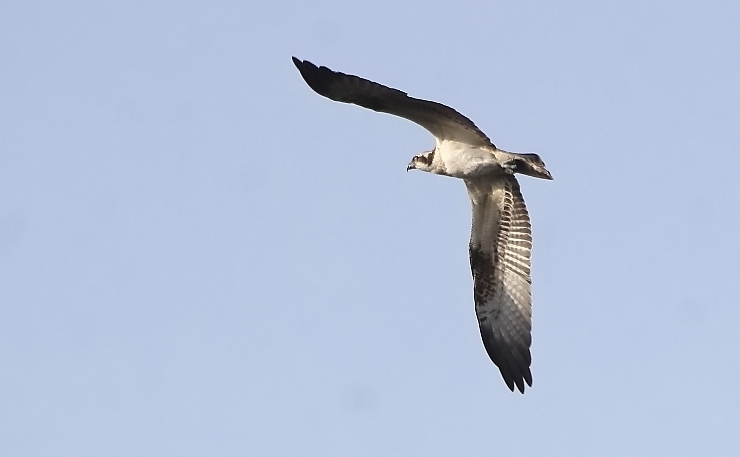
After travelling to the Middle East, our work required us to spend one more week in Algeciras, Spain. This time, I had the benefit of a lighter schedule — that, and another benefit we had already had there, on our previous stay. Our friends/hosts, you see, live in an unattached house (a rarity in Spain, where most people live in apartments); and that house is only a few minutes’ walk from the delta of the Palmones River. I, of course, love a good river delta. I couldn’t take much advantage of it on our first, two-week stay. But this time, I could.
Now, it is much easier for me to achieve first-time sightings of species in Europe than it is in Mexico, at this point of the game. Still, I had already had several opportunities to visit wetlands in southern Spain. So I might have assumed I would not see new species in the Palmones wetlands. Happily, I would have been mistaken.
I managed to spend two good mornings at Palmones. The first gave me eight new species for Spain, of which four were lifers. And my next outing, two days later? Eight additional new species for Spain, of which three were lifers!
I may well have seen Eurasian Crag-Martins prior to that first morning. But it was nice to have photographic proof of this sighting:
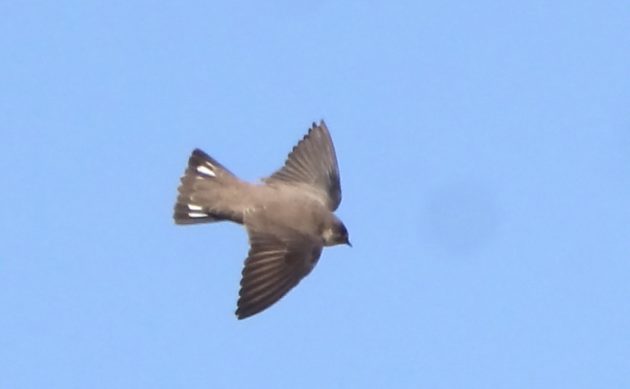
Thanks for showing me those diagnostic white tail patches!
In contrast, if I had ever seen a Common Kingfisher before, I would most certainly have realized it. This bird may be “common”, but it is also stunning. Too bad my photos didn’t do it justice.
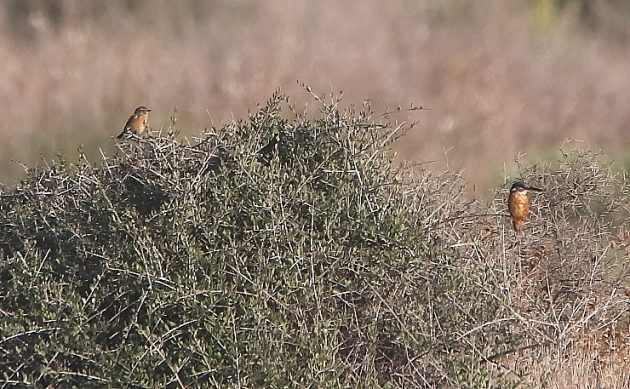
That’s the Kingfisher at the right; on the left was one of the area’s many European Stonechats. The Kingfisher’s irridescent blue back was a wonder to see as it flew to this perch, but my camera didn’t focus on the fast-flying bird.
The Lesser Kestrel was another bird I may have seen before, but without proof. It was busy mobbing one of the region’s many Booted Eagles. (Question: Is it technically correct to speak of a lone bird “mobbing”?)
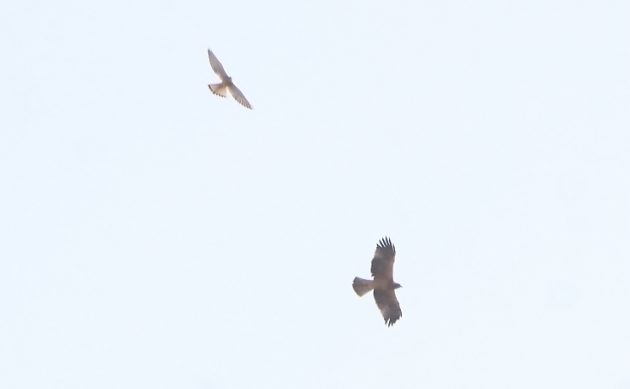
A Common Greenshank, seen a ways upriver, was my fourth lifer. (You can get a sense of the breadth of my European birding experience by how many of my lifers have the word “Common” in their names. Many others include the words “European” or “Eurasian”, but that is pretty much avoidable… Apparently, Old World bird namers didn’t like to work very hard at their craft.) Had I seen this bird at home, I would certainly have identified it as a Willet.
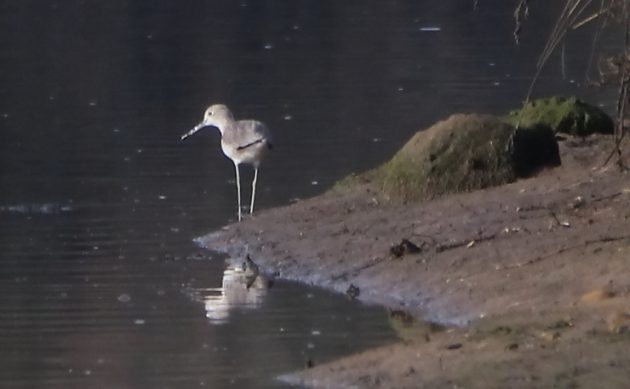
An Osprey, member of a worldwide species I can also see in Mexico, was also more generous with the photos. He circled just above me, allowing me to take the photo seen at the head of this post.
On the second day out, the Water Pipit started the lifer list. I’m rather embarassed that I can’t find any photos for this one, and one month later, I do not have any clear memories as to how I arrived at my identification. Gee, I hope I got this one right.
Fortunately, I have no such doubts regarding my second lifer, the Common Ringed Plover.
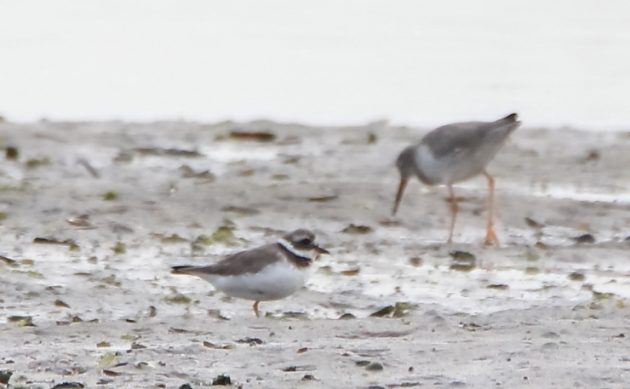
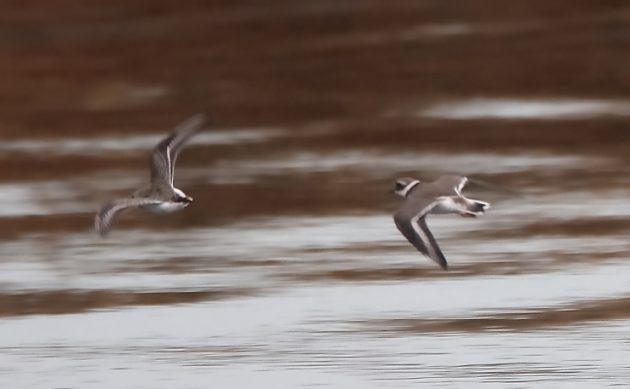
My first two Eurasian Oystercatchers were an unexpected delight. Oystercatchers are unquestionably cool birds, and, even in North America, a rare treat.
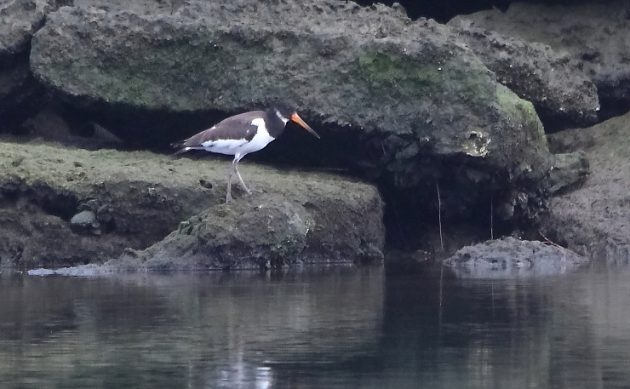
I also enjoyed seeing some old friends, always an interesting experience when one has travelled to the other side of the world. Dunlins, Black-bellied Plovers (known as Grey Plovers in Europe), a Whimbrel, and the inevitable Mallards and Rock Pigeons, all turned up to make me feel at home.
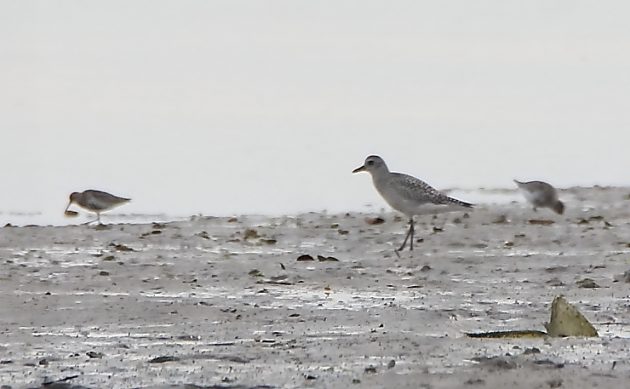
That’s one Grey Plover, and two Dunlins.
And that, my friends, will probably be the end of my reports on our 2022 Spain/Middle East trip. Next week, we will be back to Mexico.











It was the right time of the year to find a water pipit at a location like this. (They are an alpine-nesting species that descends to lowland wetlands in the autumn and winter). They are an easy bird to overlook as they tend to blend in well with their surroundings. Incidentally, oystercatchers are scarce in Southern Spain and Portugal, but they are common around the coastlines of Northern Europe, including Britain.
Thanks, David! Since my knowledge of European species is still limited, I tried to get close to locals whenever possible. Unfortunately, that was only the case at the Cazalla Hawk Observatory. But it was great when I could do it!